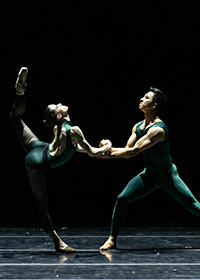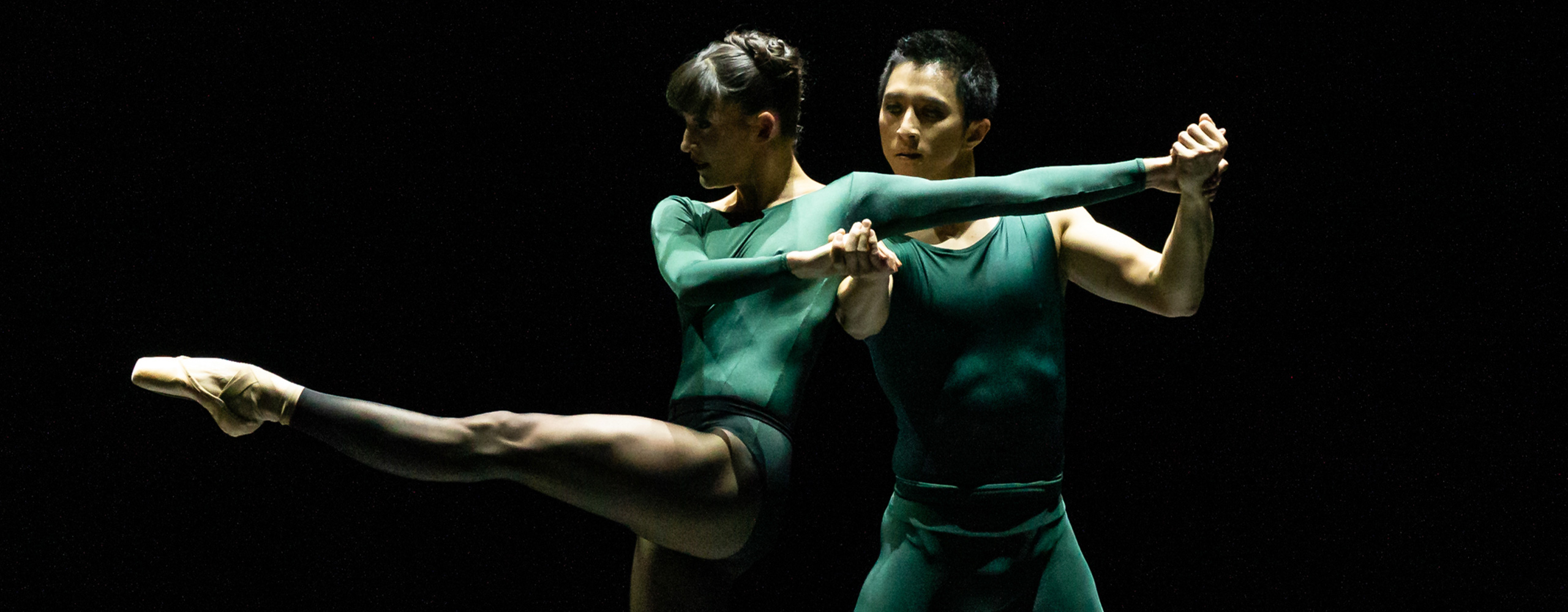
Choreography by William Forsythe
Music by Thom Willems in collaboration with Leslie Stuck
Stage, Lighting and Costume Design by William Forsythe
Staged by Thierry Guiderdoni
Lighting and Lighting Supervisor – Tanja Rühl
Sound Supervisor – Benjamin Young
William Forsythe was born in 1949 in New York. He started his formal dance training in college at Jacksonville University in Florida before joining Joffrey Ballet II. In 1973 he joined Stuttgart Ballet and in 1976 began choreographing becoming Stuttgart Ballet’s resident choreographer in 1978.
The American choreographer spent most of his career in Germany where he directed Ballet Frankfurt (1984-2004) and the Forsythe Company (2005- 2015). His choreography is a marriage of classical ballet and modern dance. He strays from classical ballet in surprising ways, especially in partnering work where the dancers use off-center balance and counterbalance and stretch their limbs far from their torsos. He likes to play with the audiences’ expectations. Thom Willems’ electronic scores have been used for many of his works.
Commissioned by Rudolf Nureyev and created for the Paris Opera Ballet in 1987, Forsythe’s In the Middle, Somewhat Elevated was hailed as a contemporary masterpiece when it premiered and has become Forsythe’s most famous ballet worldwide. This is a work that redefined the very direction of where contemporary dance was going. And to this day it continues to challenge the very essence of what one would normally expect from a ballet performance.
Why the title? Two golden cherries hanging “in the middle, somewhat elevated,” create a minimal reflection of the vast interior of the Palais Garnier, home of the Paris Opera Ballet.
For Forsythe, In the Middle, Somewhat Elevated was always meant to serve as the central abstract second act of a four act post-modern ballet called Impressing the Czar. This larger work was subsequently created in Frankfurt the following year in 1988. The full-length piece explores the decline of western civilization, with characters including Saint Sebastian and the Brothers Grimm and a conclusion that sees the entire cast dressed as schoolgirls flying around the stage in a bacchanalian celebration of the power of dance.
Kansas City Ballet Premiere: Friday, May 10, 2019. Kauffman Center for the Performing Arts
World Premiere: May 30, 1987, Ballet de l’Opera de Paris, Palais Garnier, Paris France.
